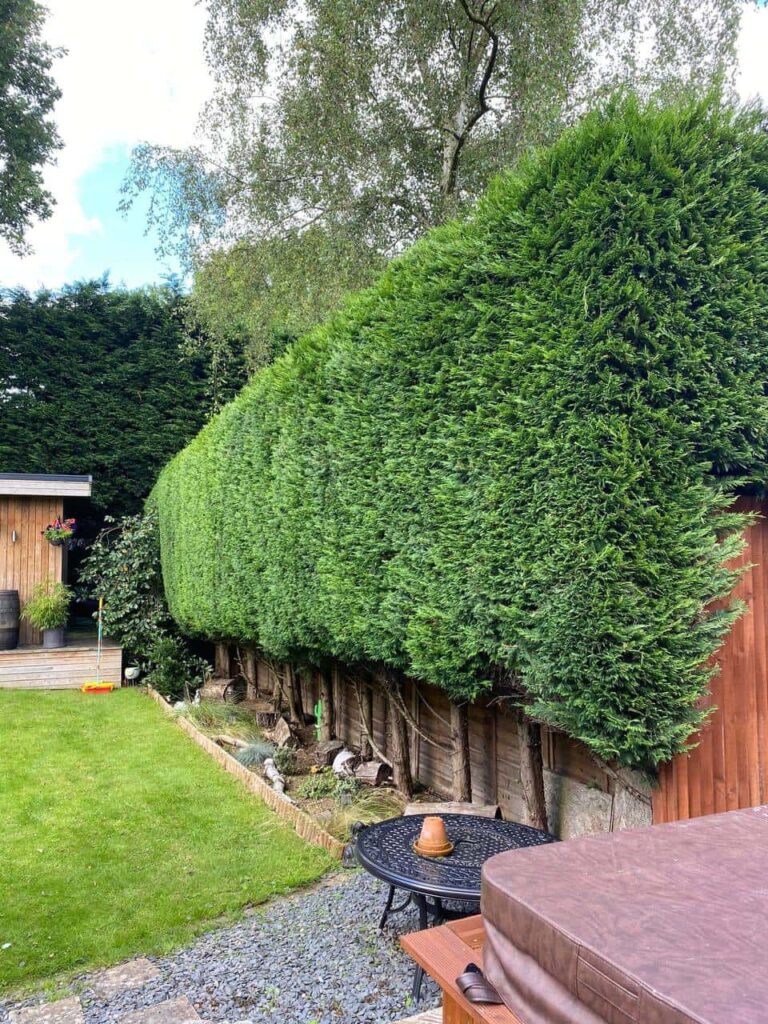Tree surgery is a crucial service that ensures trees are healthy, safe, and well-maintained. After undergoing tree surgery, trees require specific aftercare to ensure optimal recovery and long-term health. At Newmarket Tree Surgeons, we provide expert guidance on how to care for trees after surgery to promote healing, reduce stress, and help your trees thrive in Newmarket, Suffolk. Here’s a detailed guide on effective post-surgery tree care.
1. Watering: Hydration for Healing
One of the most important aspects of tree care following surgery is proper hydration. Trees, especially those that have undergone significant pruning or removal of dead wood, may experience a temporary stress response.
- Consistent Watering: For trees recently treated with surgery, consistent but moderate watering is recommended. Over-watering can cause root rot, while under-watering may hinder the tree’s recovery.
- Deep Soaking: Watering the tree deeply rather than superficially ensures that moisture reaches the roots, where it’s most needed for recovery.
- Seasonal Adjustments: In warmer months, increase the frequency of watering, as the tree will lose more moisture due to heat and sunlight. Conversely, in cooler months, reduce watering but ensure the tree remains hydrated.
2. Mulching to Retain Moisture and Insulate
Applying a layer of mulch around the base of the tree is beneficial in several ways. Mulch helps retain soil moisture, regulate temperature, and suppress weed growth, all of which create a healthier environment for the tree as it recovers.
- Correct Application: Apply mulch in a layer about 2-3 inches thick, starting a few inches away from the trunk to avoid fungal growth. Spread it in a circle around the base, covering the root zone.
- Organic Mulch: Using organic materials like wood chips or shredded bark is ideal, as these materials break down over time, enriching the soil and providing nutrients.
- Temperature Control: Mulching is particularly useful in extreme weather. In summer, it keeps roots cool, while in winter, it insulates roots from frost damage.
3. Pruning: Minimal Maintenance to Encourage Growth
After tree surgery, additional pruning should be minimal to allow the tree to focus on healing. However, light maintenance pruning may be beneficial to support the tree’s structure as it recovers.
- Avoid Over-Pruning: Over-pruning after surgery can put stress on the tree, as it reduces its ability to produce energy through photosynthesis.
- Regular Monitoring: Keep an eye out for any dead or damaged branches and remove them carefully, as these can pose a risk to the tree’s overall health.
- Support Structural Integrity: By selectively pruning only minor growth that interferes with the tree’s shape or causes crowding, you can help maintain the tree’s structure without hindering recovery.
4. Fertilisation: Nourishment for Regrowth
Providing the right nutrients after tree surgery is essential for a tree’s recovery, especially if a significant portion of its canopy or branches was removed. Fertilising encourages new growth and helps replenish nutrients in the soil.
- Timing: Apply fertiliser in early spring or late autumn to support the tree during its natural growth phases.
- Balanced Fertiliser: Use a slow-release, balanced fertiliser to avoid overstimulating growth, which can strain the tree.
- Soil Testing: Conduct a soil test to determine which nutrients are lacking and choose a fertiliser that matches those specific needs.
5. Monitoring for Pests and Diseases
After tree surgery, trees may be more susceptible to pests and diseases due to temporary stress. Monitoring your tree closely is key to catching potential issues early.
- Regular Inspection: Check for signs of pests, such as wilting leaves, unusual spots, or holes in the bark. Catching these early allows for prompt treatment.
- Prompt Treatment: If you notice signs of infestation or disease, seek professional advice for targeted treatment to prevent it from spreading.
- Maintaining Cleanliness: Remove any fallen branches or leaves around the base of the tree to discourage pest habitats and reduce the risk of fungal infections.
6. Protecting Against Physical Damage
After surgery, trees are more vulnerable to physical damage from external factors such as weather or construction work. Taking measures to protect them is crucial for optimal recovery.
- Wind Protection: Young trees or those with significant crown reduction can be more susceptible to wind damage. Consider staking smaller trees or using temporary windbreaks if your tree is in an exposed location.
- Avoid Mechanical Damage: Refrain from using heavy equipment or mowing too close to the tree to avoid damaging the root system or trunk.
- Temporary Barriers: For trees in high-traffic areas, installing a temporary barrier can protect them from accidental damage and ensure a clear space for healthy regrowth.
7. Patience and Professional Guidance
Trees recover from surgery at their own pace, and it’s important to allow them adequate time to heal. While proper care speeds up the process, patience is also essential.
- Professional Check-Ups: Schedule follow-up visits with a professional arborist to ensure the tree’s recovery is on track. They can provide tailored advice and make any necessary adjustments to your care routine.
- Allowing Natural Healing: Avoid excessive interference with the tree, as over-managing can sometimes do more harm than good. Trust the natural resilience of the tree, and let it gradually adjust and grow.
Conclusion: Trust in Expert Care for Tree Health and Longevity
Caring for a tree after surgery is a careful balance of providing essential support and respecting the tree’s natural recovery process. At Newmarket Tree Surgeons, we bring years of expertise in tree surgery and aftercare to help your trees thrive in Newmarket, Suffolk. Our team is committed to guiding clients through post-surgery care, ensuring trees regain their strength and beauty.
If you’ve recently had tree surgery or are considering it, reach out to Newmarket Tree Surgeons for advice on optimal recovery practices. Our professionals are here to support you with expert recommendations tailored to your tree’s specific needs, ensuring the health and longevity of your landscape.
Call us on: 01638 591 692
Click here to find out more about Newmarket Tree Surgeons
Click here to complete our contact form and see how we can help with your tree needs.

